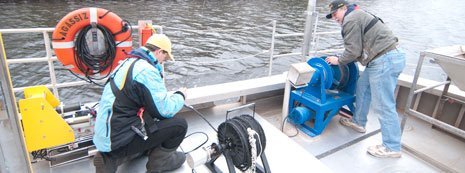Preliminary studies on potential remediation of acid mine drainage‐impacted soils by amendment with drinking‐water treatment residuals
Document Type
Article
Publication Date
6-6-2018
Abstract
Mining operations result in a wide range of environmental impacts: acid mine drainage (AMD) and acid sulfate soils being among the most common. Due to their acidic pH and high soluble metal concentrations, both AMD and acid sulfate soils can severely damage the local ecosystems. Proper post‐mining management practices are necessary to control AMD‐related environmental issues. Current AMD‐impacted soil treatment technologies are rather expensive and typically not environmentally sustainable. We conducted a 60‐day bench‐scale study to evaluate the potential of a cost‐effective and environment‐friendly technology in treating AMD‐impacted soils. The metal binding and acid‐neutralizing capacity of an industrial by‐product, drinking water treatment residuals (WTRs) were used for AMD remediation. Two types of locally generated WTRs, an aluminum‐based WTR (Al‐WTR) and a lime‐based WTR (Ca‐WTR) were used. Highly acidic AMD‐impacted soil containing very high concentrations of metals and metalloids, such as iron, nickel, and arsenic, was collected from the Tab‐Simco coal mine in Carbondale, Illinois. Soil amendment using a 1:1 Al‐ and Ca‐WTR mix, applied at 5 and 10 percent rates significantly lowered the soluble and exchangeable fractions of metals in the AMD‐impacted soil, thus lowering potential metal toxicity. Soil pH increased from an extremely acidic 2.69 to a near‐neutral 6.86 standard units over the 60‐day study period. Results from this preliminary study suggest the possibility of a successful scale‐up of this innovative, cost‐effective, and environmentally sustainable technology for remediating AMD‐impacted acid sulfate soils.
Publication Title
Remediation
Recommended Citation
Roychowdhury,, A.,
Sarkar, D.,
&
Datta, R.
(2018).
Preliminary studies on potential remediation of acid mine drainage‐impacted soils by amendment with drinking‐water treatment residuals.
Remediation,
28(3), 75-82.
http://doi.org/10.1002/rem.21562
Retrieved from: https://digitalcommons.mtu.edu/cee-fp/73


Publisher's Statement
©2018 Wiley Periodicals, Inc. Publisher's version of record: https://doi.org/10.1002/rem.21562